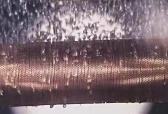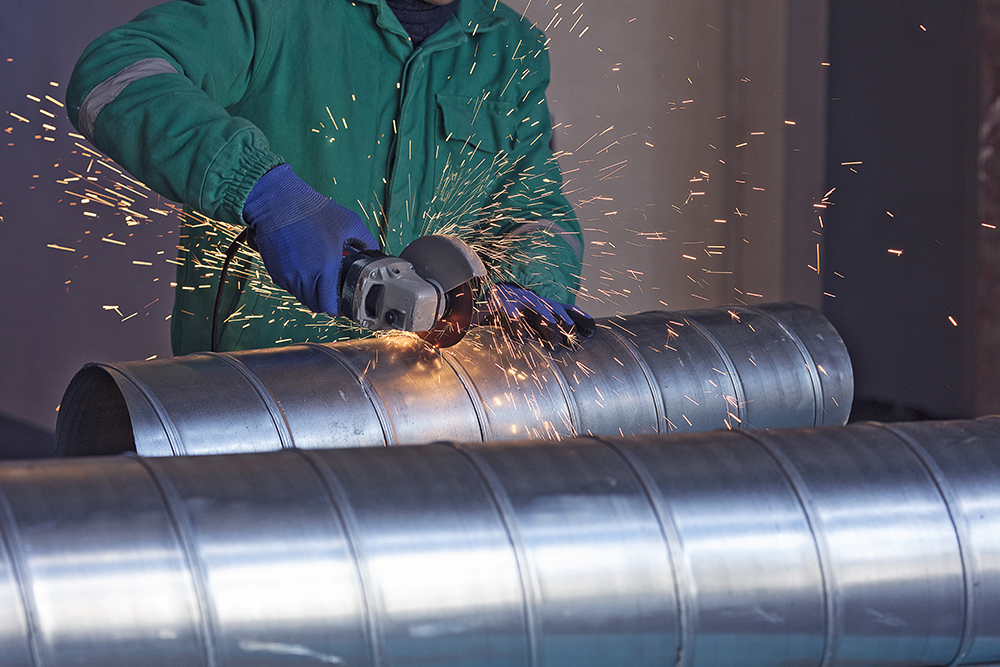In heating, ventilation, air conditioning, and refrigeration (HVAC-R) systems, efficient heat transfer is essential. Finned tube evaporators, widely used in air conditioners and refrigeration units, excel at this. But how do they work? In this article, we’ll break down the basic mechanics behind finned tube evaporators and explain why they’re so important in keeping things cool.
What is a Finned Tube Evaporator?
A finned tube evaporator is a heat exchanger that improves heat transfer between two fluids—usually refrigerant and air. Used mainly in cooling and dehumidifying systems, the evaporator’s “finned tube” design adds thin metal fins around the refrigerant tubes, creating more surface area for heat exchange. This larger surface area allows the system to cool more effectively and quickly.
Key Components of a Finned Tube Evaporator
- Tubes: These carry the refrigerant and are typically made of copper or aluminum, both highly conductive and corrosion-resistant.
- Fins: Thin metal sheets attached around the tubes, fins increase surface area to allow more efficient heat transfer.
- Headers or Manifolds: These distribute refrigerant evenly into the tubes.
- Optional Shell: Some designs include a shell around the assembly to direct airflow over the fins and maximize heat exchange.
How Does a Finned Tube Evaporator Work?

Here’s a step-by-step look at how finned tube evaporators operate:
- Refrigerant Flow: Refrigerant enters the tubes as a low-temperature, low-pressure liquid, absorbing heat as it flows.
- Heat Transfer via Fins: The fins increase contact area with the air passing over them. As the refrigerant absorbs heat from the air, the air cools.
- Phase Change: The refrigerant heats to its boiling point, evaporates into gas, and in doing so absorbs a large amount of heat.
- Cool Air Distribution: The now-cooled air is directed into the room or refrigeration space, while the refrigerant moves to the compressor to restart the cycle.
Why Fins Matter in Heat Transfer
Fins are critical to maximizing heat transfer. Made from materials like aluminum or copper, they offer high thermal conductivity. Aluminum is popular for being lightweight and resistant to corrosion, while copper fins offer even better conductivity for applications needing superior heat transfer.
Types of Finned Tube Evaporators
Different designs suit different applications:
- Plain Finned Tube Evaporators: Simple and cost-effective, these work well in standard air conditioning.
- Enhanced Finned Tube Evaporators: Modified with wavy or perforated fins to boost heat transfer by creating turbulence.
- Helical or Spiral Finned Tubes: These spiral fins are ideal for industrial use where high heat transfer and compact design are key.

What Makes Finned Tube Evaporators Efficient?
Finned tube evaporators maximize heat transfer with minimal energy use. Here’s why they’re efficient:
- Increased Surface Area: Fins create more surface contact between refrigerant and air, boosting heat exchange.
- High-Conductivity Materials: Copper and aluminum both conduct heat well, with copper offering superior thermal performance.
- Compact Size: Finned tube evaporators pack a lot of cooling power into a small space.
- Enhanced Fin Designs: Specialized fins create airflow turbulence, which further improves heat transfer without extra energy.
Where Are Finned Tube Evaporators Used?
Their versatility makes them ideal for many applications:
- Air Conditioning Units: These evaporators are crucial in HVAC systems for cooling indoor air.
- Refrigeration: In fridges and freezers, they help maintain cold temperatures efficiently.
- Industrial Cooling: Finned tube evaporators cool machinery and processes that produce heat, preventing equipment from overheating.
Advantages of Finned Tube Evaporators
Why choose a finned tube evaporator? Here are some key benefits:
- Fast and Efficient Cooling: High heat transfer rates mean quick, efficient cooling.
- Durability: Made from corrosion-resistant materials, they last in tough conditions.
- Energy Efficiency: Finned designs minimize energy consumption, enhancing system efficiency.
- Customizable Options: Options like helical and enhanced fins allow for customized solutions in tight spaces or high-demand applications.
Conclusion: Finned Tube Evaporators – A Cornerstone of Cooling
Finned tube evaporators are essential to heat exchange technology. With their finned design, they deliver powerful, efficient cooling for everything from air conditioning to industrial machinery. As energy efficiency becomes more important, these evaporators will remain central to effective cooling solutions. For HVAC-R professionals, understanding how finned tube evaporators work is key to designing better, more sustainable systems.








